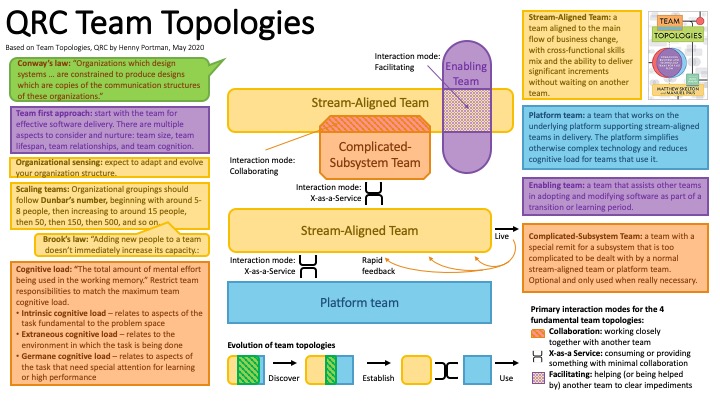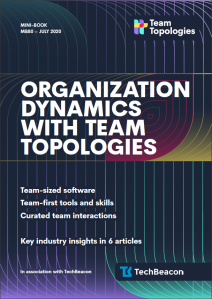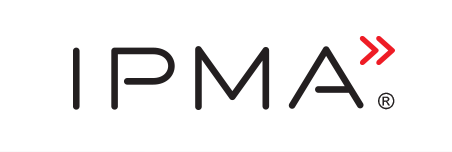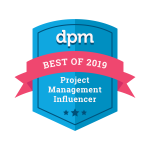 Many organizations are struggling with their business agility transformation. One of the reasons is the way they have organized their teams. The focus was probably on efficiency and if these teams start to use agile ways of working, this doesn’t make the organization agile. The book Team Topologies – Organizing business and technology teams for fast flow, by Matthew Skelton and Manuel Pais, will help you to design a team organization structure that helps you to become more agile. Using their ideas will help to overcome some obstacles for fast flow. E.g. pushing against Conway’s law, software that is too big for teams, confusing organization design options, teams that are pulled in many directions, painful re-organizations every few years, blocked flow, too many surprises and disengaged teams.
Many organizations are struggling with their business agility transformation. One of the reasons is the way they have organized their teams. The focus was probably on efficiency and if these teams start to use agile ways of working, this doesn’t make the organization agile. The book Team Topologies – Organizing business and technology teams for fast flow, by Matthew Skelton and Manuel Pais, will help you to design a team organization structure that helps you to become more agile. Using their ideas will help to overcome some obstacles for fast flow. E.g. pushing against Conway’s law, software that is too big for teams, confusing organization design options, teams that are pulled in many directions, painful re-organizations every few years, blocked flow, too many surprises and disengaged teams.
The book is divided into three parts. Part I focusses on teams as the means of delivery. Part II explains team topologies that work for flow and part III elaborates on evolving team interactions for innovation and rapid delivery.
 To download: QRC (Team Topologies, 200525) v1.0
To download: QRC (Team Topologies, 200525) v1.0
The QRC is available at the Team Topologies website too: https://teamtopologies.com/community
The book explains the seven core ideas behind team topologies:
- Conway’s law. “Organizations which design systems … are constrained to produce designs which are copies of the communication structures of these organizations.” Conway’s law tells us that an organization’s structure and the actual communication paths between teams persevere in the resulting architecture of the system built
- Team first. Start with the team for effective software delivery. There are multiple aspects to consider and nurture: team size, team lifespan, team relationships, and team cognition. Organizational groupings should follow Dunbar’s number, beginning with around 5-8 people, then increasing to around 15 people, then 50, then 150, then 500, and so on. Cognitive load: “The total amount of mental effort being used in the working memory.” Restrict team responsibilities to match the maximum team cognitive load. The following three different kinds of cognitive load are explained:
-
- Intrinsic cognitive load – relates to aspects of the task fundamental to the problem space
- Extraneous cognitive load – relates to the environment in which the task is being done
- Germane cognitive load – relates to aspects of the task that need special attention for learning or high performance.
- Four fundamental topologies. The four fundamental team topologies are explained including expected behavior and capabilities:
-
- Stream-Aligned Team: a team aligned to the main flow of business change, with cross-functional skills mix and the ability to deliver significant increments without waiting on another team (some would call these teams “product or feature teams” but talking about streams makes more sense)
- Platform team: a team that works on the underlying platform supporting stream-aligned teams in delivery. The platform simplifies otherwise complex technology and reduces cognitive load for teams that use it (a good platform is “just big enough”)
- Enabling team: a team that assists other teams in adopting and modifying software as part of a transition or learning period
- Complicated-Subsystem Team: a team with a special remit for a subsystem that is too complicated to be dealt with by a normal stream-aligned team or platform team. Optional and only used when really necessary.
- Team interaction modes. The primary interaction modes for the 4 fundamental team topologies are:
-
- Collaboration: working closely together with another team
- X-as-a Service: consuming or providing something with minimal collaboration
- Facilitating: helping (or being helped by) another team to clear impediments
- Organizational sensing. Expect to adapt and evolve your organization structure.
- Topology evolution. An organization should expect to see different kinds of interactions between different kinds of teams at any given time as the organization responds to new challenges
- Team API. A description of the entire interactions with the team: code, versioning, wiki and documentation, practices and principles, communication, work information and other.
Combine a team-first approach with Conway’s lay, the four fundamental topologies, team interaction modes, topology evolution, and organization sensing. Get started: begin with the team, identify streams, identify the thinnest viable platform, identify capability gaps, and practice team interactions.
Conclusion. I would say a great book for those who are designing their agile transition. This book will help to understand where you have to think about when creating your team topology. You get lots of case studies and industry examples.
To order (Maangementboek.nl): Team Topologies
To order (bol.com): Team Topologies
To order (Amazon.com): Team Topologies
 Get the printed pre-cut card modeling shapes for team types and team interactions. To order: pre-cut card modeling shapes
Get the printed pre-cut card modeling shapes for team types and team interactions. To order: pre-cut card modeling shapes
 As a addition to the book Team Topologies a mini-book: Organization Dynamics with Team Topologies was published. This mini-book contains 6 articles by the authors of Team Topologies – Matthew Skelton and Manuel Pais – that cover key aspects of modern organization dynamics.
As a addition to the book Team Topologies a mini-book: Organization Dynamics with Team Topologies was published. This mini-book contains 6 articles by the authors of Team Topologies – Matthew Skelton and Manuel Pais – that cover key aspects of modern organization dynamics.
The articles:
- How to break apart a monolith without destroying your team
- Forget monoliths vs. microservices. Cognitive load is what matters
- Why teams fail with Kubernetes — and what to do about it
- How to find the right DevOps tools for your team
- Why you should hire DevOps enablers, not experts
- Are poor team interactions killing your DevOps transformation?
To download (for free) this e-book: Organization Dynamics with Team Topologies



















Very nice review, thank you. A couple of errors in the text. “to big” in the beginning, and in 2. Team First, the sentence starting with “Organisational groupings” is repeated twice.
Thanks again,
Sam
Thanks.
Love the QRC, great way to synthetize the different aspects of the book !
For those wanting a bit more details and references on the book content, check my review at https://www.linkedin.com/pulse/stream-align-me-brice-beard/
Pingback: Quick Reference Cards in 2020 | Henny Portman's Blog
Pingback: Overview of my year 2020 book reviews | Henny Portman's Blog
Pingback: Japanese version of my QRC Team Topologies (チ一厶卜ポロヅ一) | Henny Portman's Blog
Thank you for the great review. I have translated the QRC into Chinese, see: https://www.beeart.com/shared/dddf882f-4155-45c8-a1c3-69a6fd498d3f
Would you mind add Chinese version QRC at the end of this blog:)
If you send me your QRC (ppt) to my email henny.portman@gmail.com I can add your version to my blog.
Thank you for your reply. Email sent:)
Added to my blog. Thanks Yu Qin.
Pingback: Chinese version of my QRC Team Topologies (团队拓扑快速参考) | Henny Portman's Blog
Pingback: 组织级测试体系 - 构建测试的体系化思维(高级篇) - BY林子
Pingback: Review Remote Team Interactions Workbook | Henny Portman's Blog
Pingback: Reading List 2022 – Elif Boncuk's Blog
Pingback: 测试部门职责 - 测试部门的职责定位 - BY林子
Pingback: 构建测试的体系化思维(高级篇) - 内存网
Hello? I’ve just translated into french your QRC Team Topologies: https://wikiagile.fr/index.php?title=Infographie_Team_Topologies